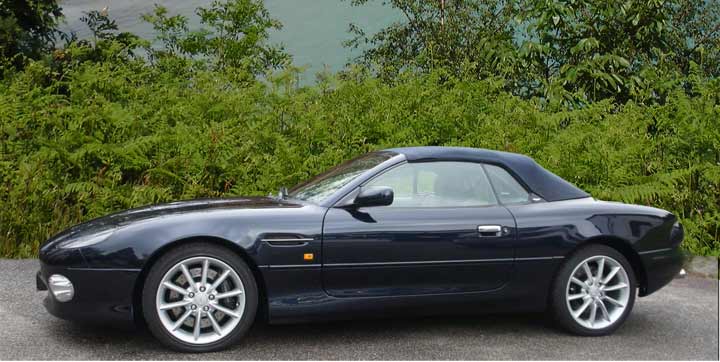Aston Martin DB7

This is the car that saved Aston Martin from bankruptcy. To put it in perspective, in 1991 the company made a grand total of just 46 cars. In the nine years after the DB7 was launched they managed to shift an average of more than 750 cars a year. How did they do this? Given, the design of this car was first class but the ultimate cause of it's success lay in the replacement of hand building techniques with mass production ones.
It's very nice having a car made out of hand beaten aluminium but it is extremely expensive and hardly conducive to supplying a mass-market. When this car was first displayed in 1993 a lot of cult followers were unhappy about the fact that old school, traditional craftsmanship was going to come second to much more efficient production techniques; but it is arguable that without this the marque would simply have died.
By this time Ford had become the owner of both Aston Martin and Jaguar. Whilst the Jaguar XJS undoubtedly had many good points it had an image problem, left over from British Leyland 'quality' standards, and it was coming to the end of it's days. It did however feature a pretty good engine; it's supercharged 3239 cc straight six power unit was developed a little further to push out 335 brake horsepower and it was used to power the DB7.
Even this wasn't enough for some people; by 1999 a 48 valve, all aluminium V8 had arrived on the scene, creating 400 brake horsepower which was enough to give a top speed of up to 184 mph. This model was very successful with more than 4400 being produced in all.
Mass production techniques or not, this was still a very attractive car! Designer Mark Callu was rumoured to have a design studio full of photos of the DB5 to act as his inspiration, and he produced a truly beautiful motorcar, available in either coupe or convertible form.
Many purists were upset about the use of Jaguar parts to reduce costs; but these were not the only parts salvaged from other car manufacturers owned by Ford! The tail lights and door handles were cannibalised from the Mazda 323; the turn signals were pure Mazda MX5; the Ford Scorpio donated several interior switches and the Citroen CX provided the wing mirrors! All these compromises, however, helped to keep costs down and shorten development and production time, so they helped to contribute towards the survival of Aston Martin.
The car was not perfect of course; nothing is. The cabin in particular was cramped with little headroom and rearward visibility was poor to say the least. Nevertheless there were many who considered it the most beautiful car in full production in the 1990s.